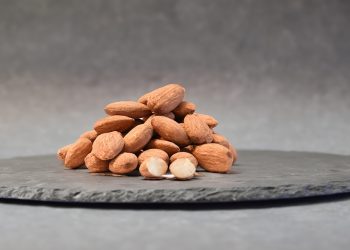Stable blood sugar levels are crucial for your overall health and well-being. They can influence your energy, mood, and even your long-term health. If you’ve ever felt that midday slump or battled with cravings, you know how vital it is to keep your blood sugar on an even keel. In this article, you’ll discover seven simple hacks that can help you stabilize your blood sugar levels daily, empowering you to feel your best.
Contents
Understanding Blood Sugar Levels
Blood sugar, or glucose, is the body’s primary source of energy. Your body gets this glucose from the foods you eat, especially carbohydrates. When blood sugar levels fluctuate wildly, it can lead to feelings of fatigue, irritability, and even cravings. Moreover, long-term imbalances can increase your risk for serious health issues like diabetes.
Why Stable Blood Sugar Matters
Maintaining balanced blood sugar levels isn’t just about avoiding those annoying cravings. It’s about nurturing your body and mind. Stable blood sugar can:
- Enhance energy levels: Say goodbye to those rollercoaster highs and lows.
- Improve mood: Stable blood sugar can lead to a more consistent emotional state.
- Aid weight management: Balanced blood sugar helps control appetite and cravings.
Ready to take control of your health? Let’s dive into these seven simple hacks!
1. Start Your Day with Protein
Kick off your morning with a wholesome breakfast rich in protein. Protein helps slow the absorption of sugar into your bloodstream, keeping your energy levels steady. Instead of sugary cereals or pastries, think eggs, Greek yogurt, or a protein smoothie.
Quick Protein Breakfast Ideas
- Scrambled eggs with spinach
- Greek yogurt topped with berries and nuts
- A smoothie made with spinach, banana, and protein powder
2. Choose Low Glycemic Index Foods
The glycemic index (GI) measures how quickly foods raise blood sugar levels. Low GI foods release glucose slowly, keeping your blood sugar stable. Incorporate more whole grains, legumes, fruits, and non-starchy vegetables into your meals.
Low GI Food List
- Whole grains: Quinoa, barley, and whole oats
- Legumes: Lentils, chickpeas, and black beans
- Fruits: Apples, berries, and oranges
- Vegetables: Spinach, broccoli, and carrots
For more information on the glycemic index, check out the American Diabetes Association.
3. Stay Hydrated
Water plays a vital role in maintaining stable blood sugar levels. Dehydration can lead to increased blood sugar concentrations. Aim to drink at least eight glasses of water a day, and consider adding herbal teas or flavored water for variety.
Tips for Staying Hydrated
- Carry a reusable water bottle with you.
- Set reminders on your phone to drink water.
- Infuse water with slices of lemon or cucumber for a refreshing twist.
4. Incorporate Healthy Fats
Healthy fats are not your enemy; they’re your allies! Healthy fats, like avocados, nuts, and olive oil, slow down digestion and help keep blood sugar levels steady. Including these in your meals can provide lasting energy and satisfaction.
Healthy Fat Sources
- Avocados
- Nuts (almonds, walnuts, pistachios)
- Seeds (chia, flaxseed)
- Olive oil
5. Mind Your Portions
Even healthy foods can spike blood sugar if you eat them in large quantities. Practicing portion control can help you enjoy a variety of foods without overwhelming your system.
Portion Control Tips
- Use smaller plates to naturally limit your portions.
- Listen to your body’s hunger cues; eat when you’re hungry, not just out of habit.
- Consider measuring servings, especially for high-calorie items like nuts and grains.
6. Balance Your Meals
Aim for balanced meals that include protein, healthy fats, and fiber. This combination slows digestion and prevents blood sugar spikes. When you eat, think of your plate as a colorful canvas filled with nutrients.
Balanced Meal Ideas
- Grilled chicken with quinoa and steamed broccoli drizzled with olive oil
- Lentil soup with a side salad topped with avocado and nuts
- A stir-fry with tofu, mixed vegetables, and brown rice
7. Get Moving
Regular physical activity plays a significant role in stabilizing blood sugar levels. Exercise enhances insulin sensitivity, which helps your body use blood sugar more effectively. Aim for at least 150 minutes of moderate exercise each week.
Fun Ways to Stay Active
- Go for a brisk walk after meals.
- Join a dance class or try yoga.
- Incorporate short bursts of activity throughout your day, like taking the stairs instead of the elevator.
Bottom Line
Stabilizing your blood sugar levels doesn’t have to be complicated. By incorporating these seven simple hacks into your daily routine, you can enjoy sustained energy, improved mood, and a healthier lifestyle. It’s all about making small, manageable changes that add up over time.
Make today the day you take control of your health. Start with one or two of these hacks, and watch how your body responds. You deserve to feel vibrant and energized every day!
FAQs
Q: How quickly can I see results from these hacks?
A: Many people notice improvements in their energy levels and mood within a few days of making these changes.
Q: Are there any foods I should completely avoid?
A: While it’s best to limit processed foods, sugary snacks, and refined carbs, it’s all about balance. Enjoy treats in moderation.
Q: Can stress affect my blood sugar levels?
A: Absolutely! Stress can lead to hormonal changes that spike blood sugar. Incorporate stress-reduction techniques like meditation or deep breathing.
Embrace these simple hacks, share them with a friend, and start your journey toward stable blood sugar today!
Get Your FREE Natural Health Guide!
Subscribe now and receive our exclusive ebook packed with natural health tips, practical wellness advice, and easy lifestyle changes — delivered straight to your inbox.














